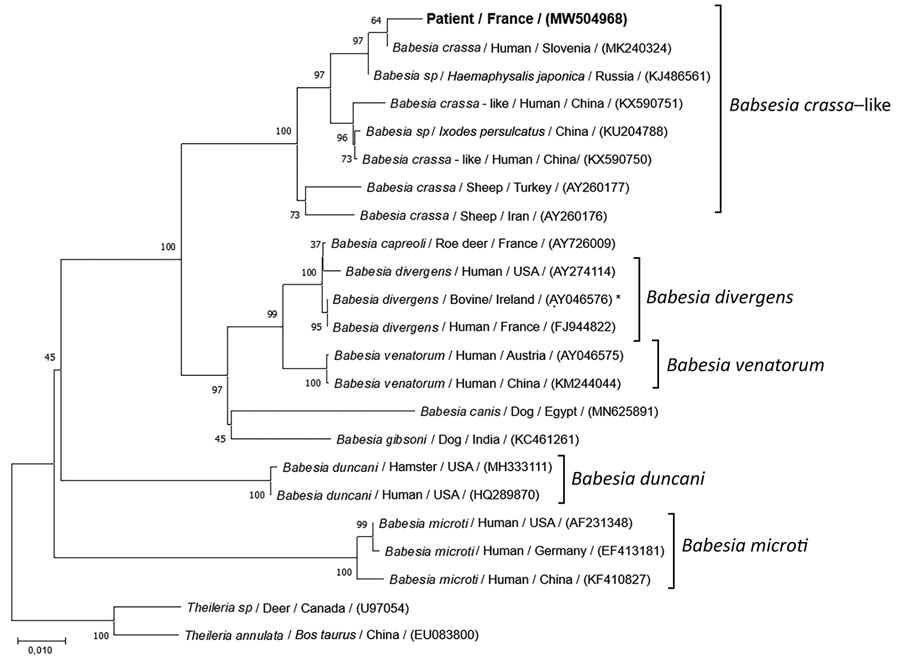Volume 28, Number 2—February 2022
Dispatch
Babesia crassa–Like Human Infection Indicating Need for Adapted PCR Diagnosis of Babesiosis, France
Figure 2

Figure 2. Evolutionary analysis of 18S RNA sequences of Babesia from a 61-year-old man from western France and reference sequences. Neighbor-joining tree of 1,000 bootstrap pseudoreplicates with Kimura 2-parameter distances of internal transcribed spacer 1 gene from 18S RNA sequences of the Babesia genus (MEGA X 10.1.8, https://www.megasoftware.net). Bootstrap proportions >50% are indicated. This phylogenetic tree illustrates the relationship between the species infecting this patient (GenBank accession no. MW504968) and the 20 different species of Babesia obtained from GenBank. Species, host, origin, and accession number are indicated. Theileria spp. was used as outgroup. Scale bar represents 1% of divergence. Asterisk indicates in vitro culture.